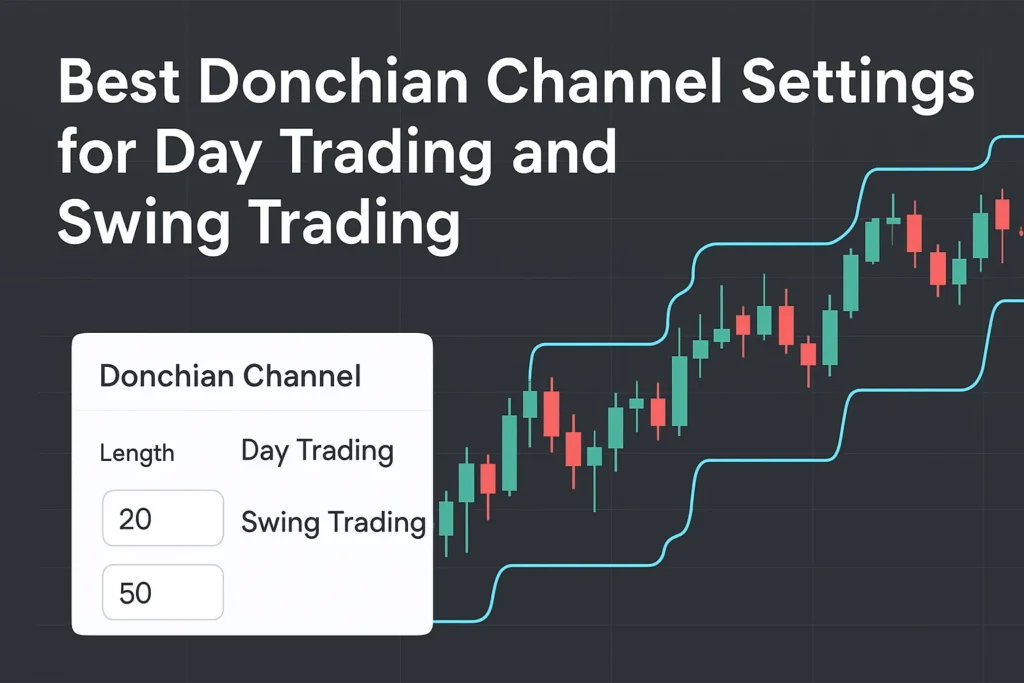To understand how the Donchian Channel strategy works in real-world trading, it helps to walk through a live example. In this case study, we’ll break down a profitable breakout trade step by step—covering the setup, entry, stop-loss, exit, and results.
This trade was based on the 20-day Donchian Channel breakout on a popular stock.
Trade Summary
- Asset: Apple Inc. (AAPL)
- Chart timeframe: Daily
- Indicator: 20-period Donchian Channel
- Strategy: Breakout above upper band
- Risk-Reward Goal: 1:2 or better
Step 1: Setup – Spotting the Breakout
On the daily chart, AAPL had been consolidating for 3 weeks between $172 and $177.
On Day 1:
- The price closed above the upper Donchian Band (20-day high) at $177.20
- Volume was higher than average, confirming breakout strength
- The 50-day EMA was sloping upward, supporting a bullish trend
✅ Breakout Criteria Met
Step 2: Entry
On Day 2 (next candle), the trade was entered:
- Buy Entry: $178.00 (above breakout close)
- Stop-Loss: $171.80 (20-day low – lower band)
- Position Size: Based on 1% risk of trading capital
Step 3: Managing the Trade
For this trade, a 2:1 risk-reward target was set:
- Risk: $6.20 ($178.00 – $171.80)
- Target: $190.40 ($178.00 + $12.40)
Trailing Stop Strategy: Once the price moved above $185, a trailing stop was used to lock in profits.
Step 4: Exit
- AAPL hit a high of $191.50 on Day 7
- Trade was exited at $190.40 (profit target reached)
✅ Profit: $12.40 per share
Trade Outcome
| Metric | Value |
|---|---|
| Entry | $178.00 |
| Exit | $190.40 |
| Stop-Loss | $171.80 |
| Profit per Share | $12.40 |
| Risk per Share | $6.20 |
| Reward-to-Risk Ratio | 2:1 |
Key Takeaways
- Wait for a valid breakout close above the channel, not just a wick
- Volume confirmation improves success probability
- Proper stop placement using the lower band controls risk
- Risk management and defined exits are critical
Conclusion
This Donchian Channel strategy case study shows how breakout trading can work when executed with discipline. By following clear rules—entry on breakout, stop-loss beyond the lower band, and realistic profit targets—you can capture powerful price movements with confidence.
Try applying this strategy on a demo account, and use similar checklists to review each trade before going live.
FAQs
Q1: Is this strategy only for stocks like AAPL?
No. It works on forex, crypto, and other trending assets too.
Q2: Should I always aim for 2:1 reward-to-risk?
It’s a good rule of thumb, but can be adjusted based on market conditions.
Q3: What if the breakout fails?
Your stop-loss will protect your capital. Losing trades are part of the process.
Q4: Can I do this on intraday charts?
Yes. Apply the same logic to 15M, 1H, or 4H timeframes.
Q5: How many candles should I wait before entering?
Enter on the next candle after the breakout close. Avoid premature entries.

